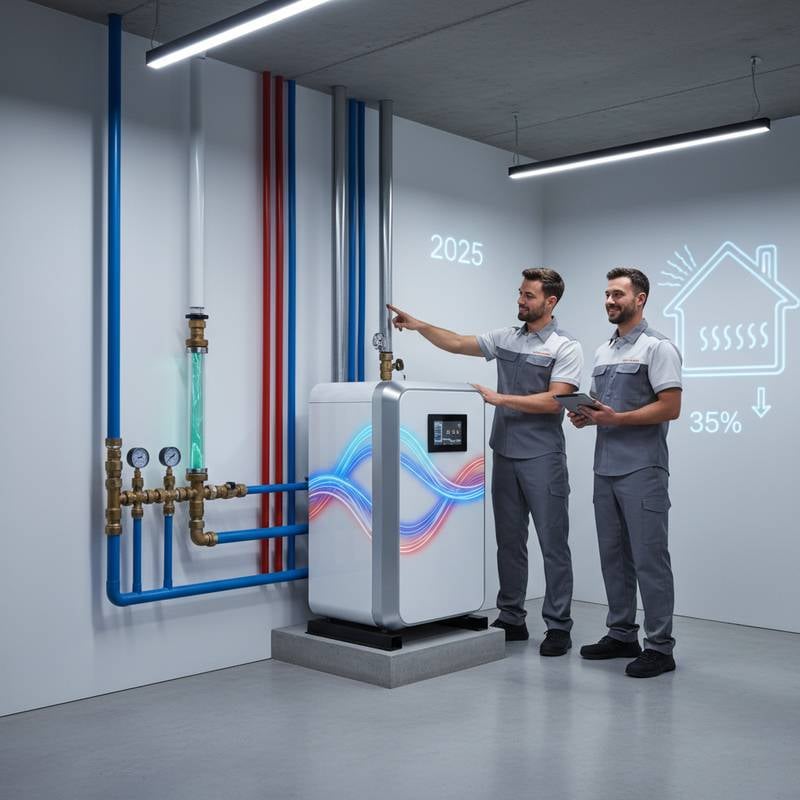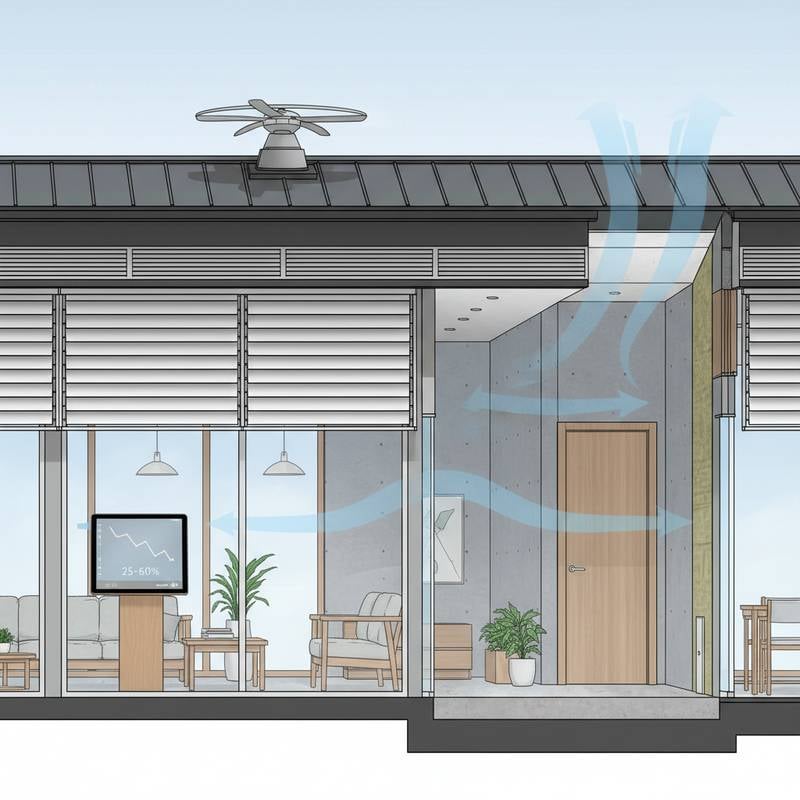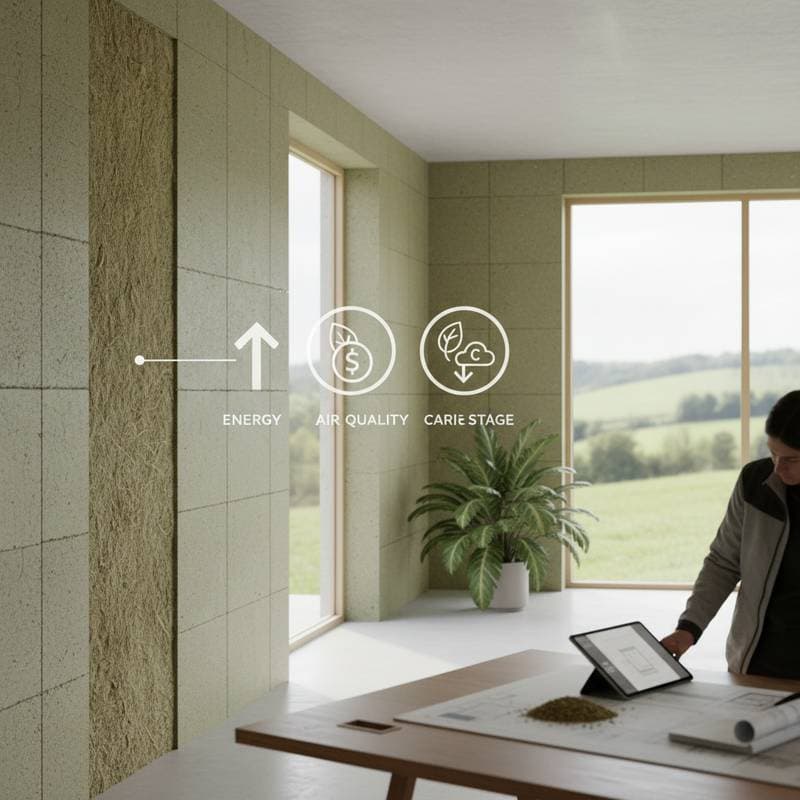Key Points
- Hempcrete emerges as a natural building material that sequesters carbon and enhances sustainable home design.
- This material delivers effective thermal insulation, humidity regulation, and fire resistance, while proving lighter and simpler to install than concrete.
- Although initial expenses exceed those of conventional options, the long-term advantages in energy efficiency, durability, and environmental impact yield substantial returns.
Breathing Life Into Buildings
Imagine a home that regulates its own temperature, maintains balanced humidity, and sequesters carbon rather than releasing it into the atmosphere. Hempcrete achieves this through a simple blend of hemp hurd, lime binder, and water. Although the material dates back centuries, its role in modern construction grows amid rising demands for energy-efficient and eco-friendly building solutions. Builders and homeowners increasingly select hempcrete for new constructions or renovations, as it promotes comfort, resilience, and reduced environmental footprint.
Why It Matters
Sustainability shapes contemporary home design, with factors such as energy expenses, air quality, and material longevity at the forefront. Hempcrete addresses these elements effectively by sequestering carbon during the curing phase, ensuring that walls built with it capture rather than emit greenhouse gases. This feature positions hempcrete favorably against cement-based alternatives, which contribute significantly to global emissions.
From a financial perspective, hempcrete installations often incur 10 to 20 percent higher upfront costs compared to traditional framing and insulation methods. However, these investments yield returns through reduced utility bills for heating and cooling, minimal maintenance requirements, and increased property values associated with green certifications. Over a 20-year period, such savings can offset the initial premium entirely.
Key Considerations for Planning
Homeowners must grasp hempcrete's role in wall assemblies before proceeding with installation. The material functions as a non-structural infill, providing insulation and vapor permeability around a load-bearing frame of timber or metal. This design enables natural airflow, which mitigates risks of mold and moisture buildup common in sealed synthetic barriers.
Essential planning points include:
- Framing material: Opt for timber frames to complement hempcrete's moisture-buffering properties; metal frames require additional vapor barriers.
- Wall thickness: Select 12 to 18 inches for optimal insulation values, balancing energy performance against potential reductions in usable interior space.
- Curing time: Allocate 4 to 6 weeks for full drying in moderate climates, adjusting schedules to avoid rushed applications that compromise strength.
- Finishing materials: Apply lime-based plasters or permeable paints to preserve the system's breathability and maximize long-term efficacy.
Consult local builders experienced in bio-based materials to tailor these elements to specific site conditions, such as regional humidity levels or seismic requirements.
Cost Breakdown and ROI Analysis
Hempcrete wall systems vary in expense based on regional material availability and installer proficiency, generally falling between the costs of fiberglass insulation and premium structural panels. Expect total installed costs of $15 to $25 per square foot, influenced by factors like hemp sourcing and on-site mixing.
Typical financial outline:
- Material costs: Hemp hurd and lime remain affordable at $0.50 to $1.00 per square foot, though transportation from hemp-growing regions can increase totals by 20 percent.
- Labor: Engage certified crews at $50 to $80 per hour, emphasizing precise mixing ratios of 1:2:1 (hurd:lime:water) for uniform results.
- ROI considerations: Achieve 30 to 50 percent reductions in heating and cooling expenses through hempcrete's high thermal mass, which stabilizes indoor temperatures without mechanical aids.
Incorporate these projections into a full energy audit to quantify payback periods, often ranging from 5 to 10 years. Certifications from programs like LEED further enhance resale value by up to 5 percent in eco-conscious markets.
Design and Lifestyle Benefits
Hempcrete constructions foster serene indoor spaces by absorbing sound waves and moderating humidity levels between 40 and 60 percent. This regulation prevents the discomfort of overly dry winters or humid summers, promoting healthier respiratory conditions for occupants.
The material's inherent properties also bolster safety: its lime composition repels pests without synthetic treatments, and the non-combustible structure withstands flames for over two hours, exceeding many conventional walls. Homeowners in urban or wildfire-prone areas find these attributes particularly reassuring, combining durability with low-impact living.
Sustainable Features and Efficiency Gains
Hempcrete advances resilient architecture by integrating seamlessly with passive design strategies, such as south-facing windows for solar gain. Its biodegradable nature allows for end-of-life recycling into soil amendments, closing the loop on resource use.
Sustainability highlights:
- Carbon sequestration equivalent to 100 kilograms per cubic meter during curing
- Natural resistance to mold through alkaline pH levels above 10
- Expected service life of 100 years with negligible material breakdown
- Seamless integration with zero-VOC finishes and renewable energy setups
As building regulations prioritize low-carbon materials, hempcrete positions properties for compliance and incentives, such as tax credits for energy-efficient retrofits.
Frequently Asked Questions
Is hempcrete legal everywhere?
Hempcrete complies with building standards in most jurisdictions, provided it meets fire and structural testing criteria. Verify requirements through local authorities, who may request third-party certifications for non-load-bearing applications.
How does hempcrete compare to other insulators?
Unlike foam boards, hempcrete permits vapor diffusion, reducing moisture-related repairs. Its R-value of 2.4 per inch rivals fiberglass while adding mass for better temperature stability.
Can hempcrete support off-grid living?
Yes, its thermal performance pairs ideally with solar panels and rainwater systems, enabling homes to operate with minimal grid reliance in suitable climates.
Embracing Carbon-Positive Construction
Adopting hempcrete transforms homes into active participants in climate mitigation, delivering immediate gains in comfort and efficiency. For those undertaking major renovations or ground-up builds, this material ensures enduring performance aligned with planetary health. Explore its potential to elevate living standards while safeguarding the environment for future generations.










